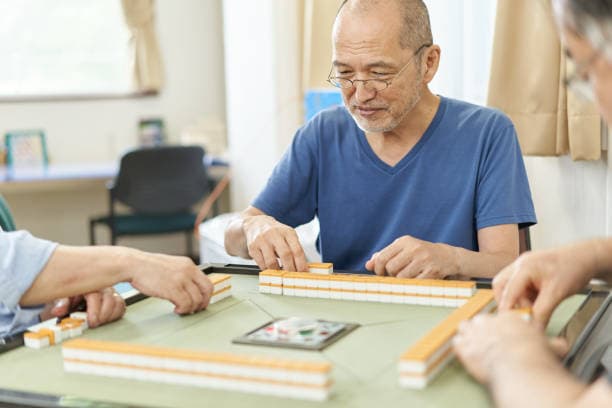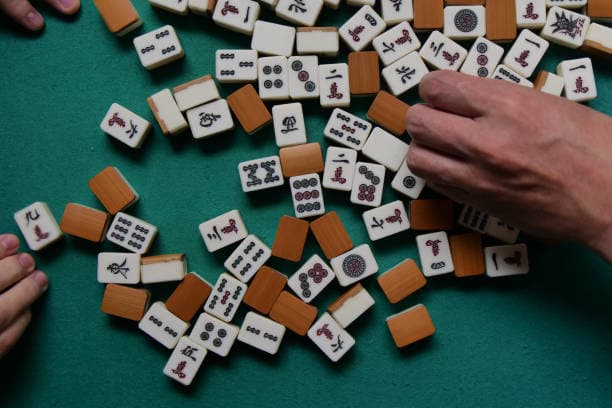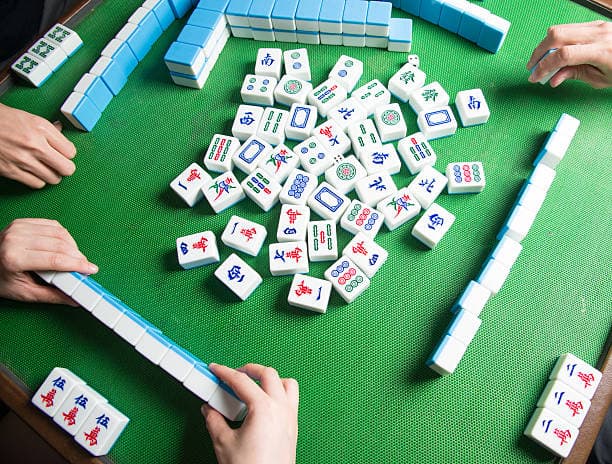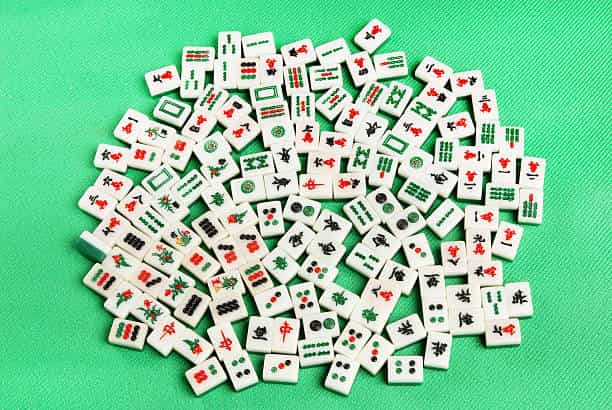Introduction
Mahjong is a game that has been played in China for centuries and has become an integral part of Chinese culture. It is a tile-based game with its roots in ancient Chinese gambling games, but has evolved over the years to become a social activity that brings people together for fun and relaxation.
Brief Histroy of Mahjong in China
The origins of mahjong are somewhat disputed, but it is believed to have been created during the Qing dynasty (1644-1911) by a government official named Wu Pei Qi. Wu was inspired by traditional Chinese card games and created mahjong as a way to modernize and update these games. It quickly became popular among the wealthy elite and eventually spread throughout all levels of society.
During the early 20th century, mahjong became so popular that it was even used as a form of currency in some parts of China. The game also gained popularity outside of China, particularly in Japan where it was adapted into its own unique version.
Importance of Mahjong in Chinese Culture
Mahjong plays an important role in Chinese culture as both a social activity and as a symbol for traditional values such as family unity, respect for elders, and perseverance through difficult times. In Chinese society, playing mahjong is seen as an opportunity to spend quality time with loved ones while also promoting mental agility and strategic thinking skills.
Additionally, many consider it to be a way to preserve cultural heritage and pass down traditions from one generation to the next. Overall, mahjong is not just another game; it represents the heart and soul of Chinese culture through its history, social significance, symbolism, and continued relevance today.
Mahjong as a Social Activity
Role of Mahjong in Chinese Social Gatherings
Mahjong is a social activity that has been an essential part of Chinese culture for centuries. It is commonly played during family gatherings and other social events such as weddings, birthdays, and festivals.
In China, playing mahjong has become an integral part of the country’s cultural identity. Playing mahjong provides an opportunity for individuals to connect with one another on a deeper level.
The game allows participants to bond over shared experiences, have fun, and enjoy each other’s company. Since the game can be played by people of all ages and skill levels, mahjong often brings together family members spanning multiple generations.
Significance of Playing Mahjong with Family and Friends
In Chinese culture, family is highly valued and considered the foundation of society. Playing mahjong with loved ones allows individuals to strengthen familial bonds while enjoying each other’s company. Elders often teach younger generations how to play mahjong during these gatherings, passing on a cherished tradition that emphasizes respect for one’s elders.
Additionally, playing mahjong can serve as an opportunity for competitive yet friendly interactions among friends. Many groups establish regular game nights where they play long into the evening while enjoying snacks and drinks together.
Etiquette and Rules of Playing Mahjong
As with any game or activity in China, there are specific etiquettes that must be followed when playing mahjong. For example, players are expected to conduct themselves with dignity throughout the game – even when they are losing!
Additionally, players must avoid interrupting others during gameplay by talking too much or being excessively loud. There are also strict rules about how players should shuffle tiles before starting each round in order to ensure that chance plays its role fairly.
These rules contribute significantly to the overall experience of playing mahjong while reinforcing values such as fairness, respect, and good sportsmanship. Ultimately, mahjong serves as more than just a game – it is a symbol of Chinese cultural identity that continues to bring people together across generations.
Symbolism in the Game of Mahjong
The Meaning Behind the Tiles and Their Designs
Mahjong is a game that is deeply steeped in Chinese culture, and its tiles reflect this rich history. Each tile has a unique design that represents a different concept or symbol in traditional Chinese beliefs.
The suits included on mahjong tiles are Bamboos, Characters, and Circles. The Bamboos represent nature and specifically plants, while the Characters denote symbols from everyday life such as people or animals.
Circles depict celestial bodies like the sun or moon. Additionally, each suit contains numbered tiles ranging from one to nine, each with its own significance.
For example, the number eight is considered lucky in China because of its similarity to the word “prosperity” in Chinese. As such, mahjong sets usually have four sets of tiles numbered eight within them.
Use of Numerology and Symbolism in Gameplay
In gameplay, players often use numerology and symbolism to guide their strategy and decision-making. For example, certain combinations of tiles are considered especially auspicious due to their numerical value or symbolic meaning.
One such combination is called “the three dragons,” which consists of three specific dragon tiles; this combination is believed to bring good fortune to whoever manages to collect it during gameplay. Players also apply traditional Chinese principles like yin yang theory when playing mahjong; balancing out complementary forces within their hand can improve their chances of winning by creating more harmony between pairs.
Connection Between Mahjong Game Play and Traditional Chinese Beliefs
Mahjong has been strongly influenced by traditional Chinese beliefs for centuries; many players view it as an extension of these ancient customs instead of just a game that they play for fun. One way that this connection manifests is through spiritual practices like feng shui, which may be used to arrange the tiles before the start of each game.
This practice is thought to create a more harmonious and balanced environment for the players, allowing them to focus their minds and achieve better gameplay outcomes. Moreover, mahjong is often played in social settings, such as during family gatherings, because it brings people together in a way that is aligned with Chinese culture.
It encourages players to think critically and strategically while also fostering communication skills through conversation and shared experiences. As such, it has become a beloved pastime in China that connects people across generations and regions.
Evolution of Mahjong
Mahjong has undergone several changes over the years since its invention in China. Initially, there were different variations of the game being played in different regions of the country. However, with the establishment of a standardized set of rules by the Chinese government in 1924, mahjong became more uniform across China.
This standardization helped to simplify and streamline the game for players. Despite this standardization, however, there are still regional variations of mahjong that exist within China today.
For instance, some regions may use slightly different scoring systems or have unique rules about how tiles can be played and collected. These differences add an element of complexity to the game and make it even more interesting for players who are familiar with only one version.
Regional Variations and Differences
Another interesting aspect of mahjong is how it has evolved as it has spread beyond China’s borders. In Japan, for example, mahjong is typically played with four players instead of three.
The Japanese version also uses a unique set of tiles that feature different characters than those used in Chinese mahjong. Similarly, Western versions often use a totally different set of symbols than those found in traditional Chinese sets.
In addition to these regional variations, modern technology has led to many new adaptations and innovations for mahjong games around the world. Today, you can find online versions that allow you to play against people from all over the globe or even compete against computer programs that have been designed to simulate human opponents.
Impact on Global Popularity
All these changes – both regional and technological – have helped contribute to mahjong’s widespread popularity today. It is estimated that there are over 600 million people around the world who play this iconic game on a regular basis!
This popularity has also led to numerous tournaments being held annually around the globe where players can compete for cash prizes and recognition. Beyond the game itself, mahjong has also become a cultural icon of China.
It has been featured in countless books, movies, and television shows over the years. It is even said that playing mahjong can be a way to learn more about Chinese culture and beliefs, as many of the game’s symbols and rules are rooted in traditional Chinese values.
The history and evolution of mahjong is a fascinating subject that speaks to its enduring popularity as both a game and cultural symbol. Whether you’re an experienced player or simply interested in learning more about Chinese culture, there’s no denying the power and significance that this ancient game holds for people around the world today.
Cultural Significance Beyond China
Mahjong has become a beloved game worldwide, spreading to countries such as Japan, Korea, and the United States. It has become a popular pastime in retirement homes and community centers alike.
The game’s simplicity, coupled with its deep cultural significance, has made it an important symbol of Chinese identity abroad. One of the reasons for mahjong’s popularity abroad is its ability to bring people together.
Many Chinese immigrants use mahjong as a way to connect with their heritage and culture while living in foreign countries. It is also used as a tool for socializing and building relationships between different communities.
In addition, mahjong’s popularity in Western countries has led to numerous adaptations of the game. Online versions allow players from all over the world to compete with one another, breaking down language barriers and promoting cross-cultural friendships.
Spread of the Game to Other Countries
Mahjong first spread throughout Asia during the early 20th century. As it gained popularity overseas, variations emerged based on regional preferences and cultural values. For instance, Japanese mahjong is played with different rules than traditional Chinese mahjong and includes unique tiles not found in other versions.
In the United States, mahjong became popular during the 1920s when it was marketed as an exotic pastime for wealthy women. The game’s popularity continued into World War II when American soldiers stationed in China learned how to play from locals.
Today, mahjong remains relevant across cultures thanks to its adaptability and widespread appeal. It has even been featured prominently in mainstream media such as movies like Crazy Rich Asians.
Mahjong as a Symbol for Chinese Identity Abroad
For many people around the world who have never been to China or experienced Chinese culture firsthand, Mahjong represents everything that makes China unique – its history, traditions and beliefs. Playing Mahjong can be a way for Chinese people living abroad to reconnect with their heritage and also share an important part of their cultural identity with non-Chinese friends.
Similarly, playing Mahjong can provide a window into a culture that is unfamiliar to many people, allowing them to learn and appreciate the complexity of Chinese society. Mahjong has become much more than just a game in China – it is a symbol of the country’s rich cultural heritage.
Its popularity has spread around the world, making it not only an important part of Chinese culture but also an important cultural bridge that connects people from all walks of life. It is proof that despite our differences, we can still find common ground through shared experiences and values.
Conclusion
Summary of Key Points
Mahjong, as we have seen, is one of the most important cultural activities in China. It has a long history dating back to the Qing dynasty and has played an integral role in Chinese society ever since. As a social activity, it serves as a way to strengthen bonds among family and friends while also promoting various values such as patience, strategy, and teamwork.
Furthermore, Mahjong has deep symbolic meaning tied to traditional Chinese beliefs and practices. It is a game that has evolved over time from its regional variations to modern adaptations that have helped spread its popularity around the world.
Why Mahjong Remains an Important Part of Chinese Culture Today
There are various reasons why Mahjong remains an essential part of Chinese culture today. First and foremost is its ability to bring people together for social events and strengthen interpersonal relationships.
Additionally, it continues to be viewed as an excellent tool for teaching important values such as patience, strategy, and teamwork. Moreover, Mahjong’s deep symbolism tied to traditional Chinese beliefs provides players with a sense of cultural identity that helps them connect with their heritage.
Final Thoughts
Mahjong’s unique place in Chinese society offers us valuable insights into not only China but also other cultures around the world. Its emphasis on building strong interpersonal relationships through social activities like gaming can teach us about the importance of forming connections with others beyond mere acquaintanceship. Additionally, the game’s intricacies highlight how important strategic thinking can be when trying to achieve any goal in life – whether it be winning at a game or succeeding in business or personal relationships.
Overall, The Cultural Significance of Mahjong in China demonstrates how games can serve not just as entertainment, but cultural artifacts that promote social values and strengthen cultural bonds. It also is a reminder of the power of tradition to shape our lives and provide us with a sense of identity – something that we can all learn from regardless of our backgrounds or where we come from.





